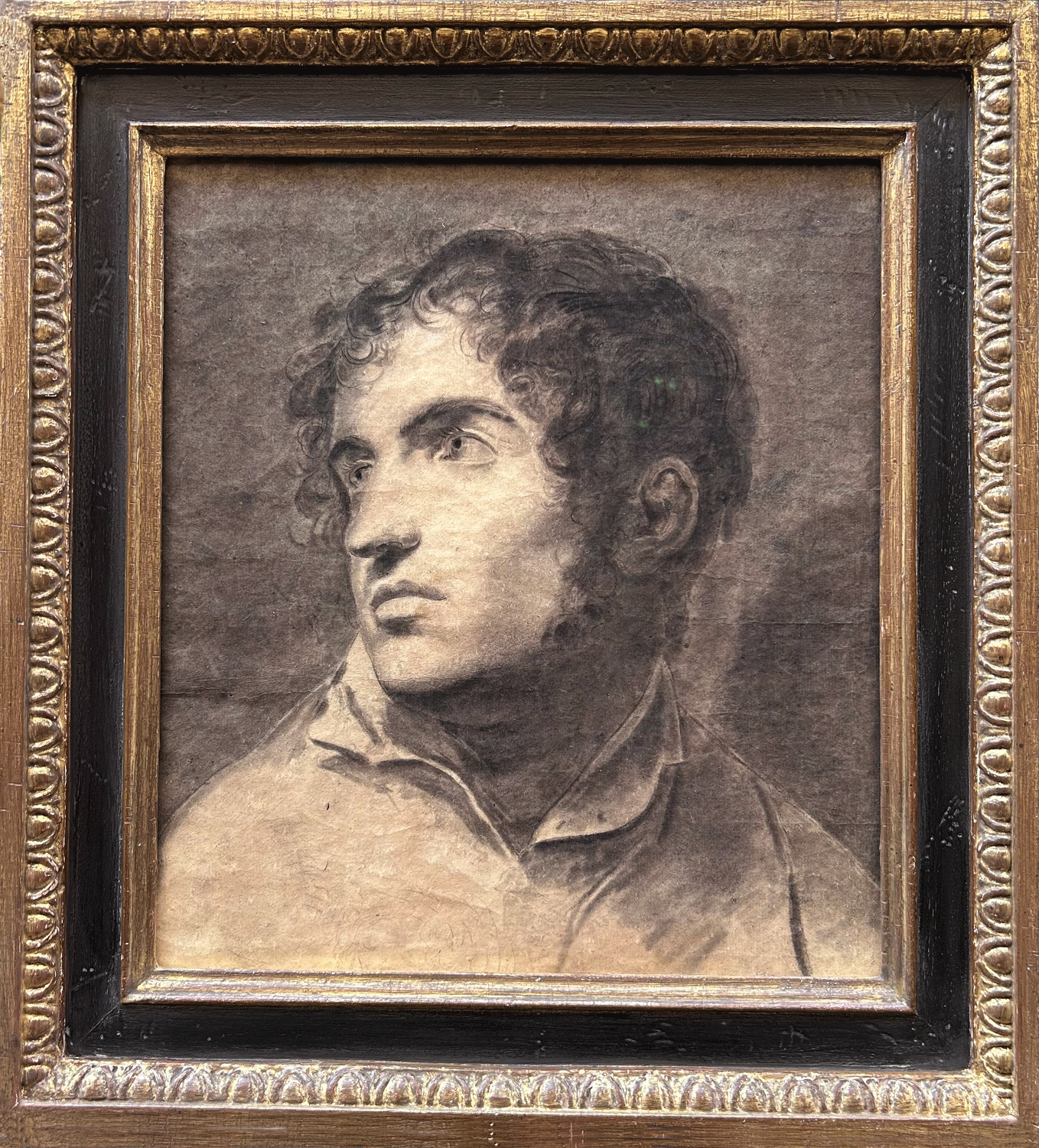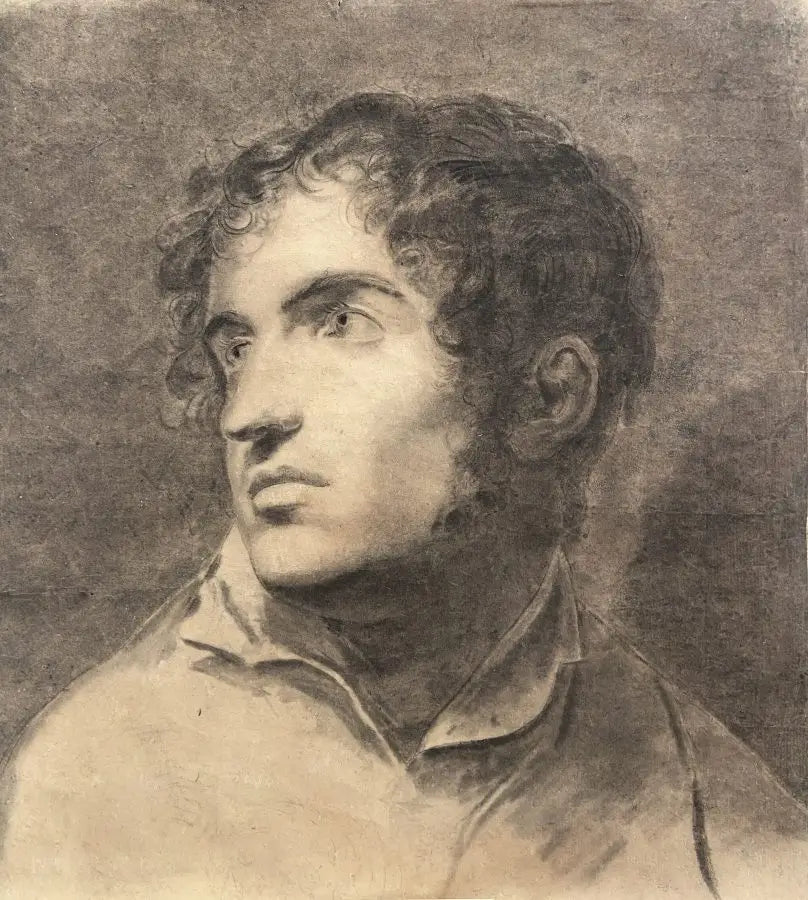

French School
Portrait of a Young Man
Charcoal and grey wash on paper
Image size: 14 ¾ x 13 ¾ inches (37.5 x 36 cm)
Ornate hand made frame
Provenance
Private collection, Washington DC.
C.G. Sloan & Co., Sept. 1980.
This charcoal portrait depicts a young gentleman with plentiful curly hair and wearing an opened collared shirt. His head is turned right, towards a distinctive light source and he gazes off in this direction.
The work is clearly part of Romanticism, first defined as an aesthetic in literary criticism around 1800, gained momentum as an artistic movement in France and Britain in the early decades of the nineteenth century and flourished until mid-century. With its emphasis on the imagination and emotion, Romanticism emerged as a response to the disillusionment with the Enlightenment values of reason and order in the aftermath of the French Revolution of 1789. Though often posited in opposition to Neoclassicism, early Romanticism was shaped largely by artists trained in Jacques Louis David’s studio, including Baron Antoine Jean Gros, Anne Louis Girodet-Trioson, and Jean Auguste Dominique Ingres.
The sitters hairstyle is classically influenced cropped short everywhere but at the front with curls combed forward onto the forehead to resemble the Roman Emperor Titus. Regency hairstyles gave men a natural, romanticized look. Supporters of the French revolution rejected powder wigs and long hair because they were used by the aristocracy and to imitate roman republican heroes. Some supporters of the monarchy adopted short hair to remember those who had their hair cut before being beheaded. Only some men in the army (like some hussars that wore one or two braids) and the elderly kept their hair long.
Charcoal was a popular medium for drawing since the Renaissance, being used for preparatory purposes: to develop initial ideas, preliminary outlines, areas of shadow, or for squaring grids used to transfer a design to another surface. However, in the 19th century, artists began to use charcoal to make highly finished drawings.
Here, the textual effects that can be seen have been achieved by the artist through scraping, the mixing of water with the charcoal powder, stumping and various reductive techniques such as erasing. The composition of the work and the artist’s choice to include a singular intense light source has allowed the charcoal to be exploited for its strength – the medium being used to produce lines that are very light and intensely black with the two being easily blended together. Indeed, the medium has always been prized for its ability to produce an interplay between light and shadow, known as chiaroscuro.



